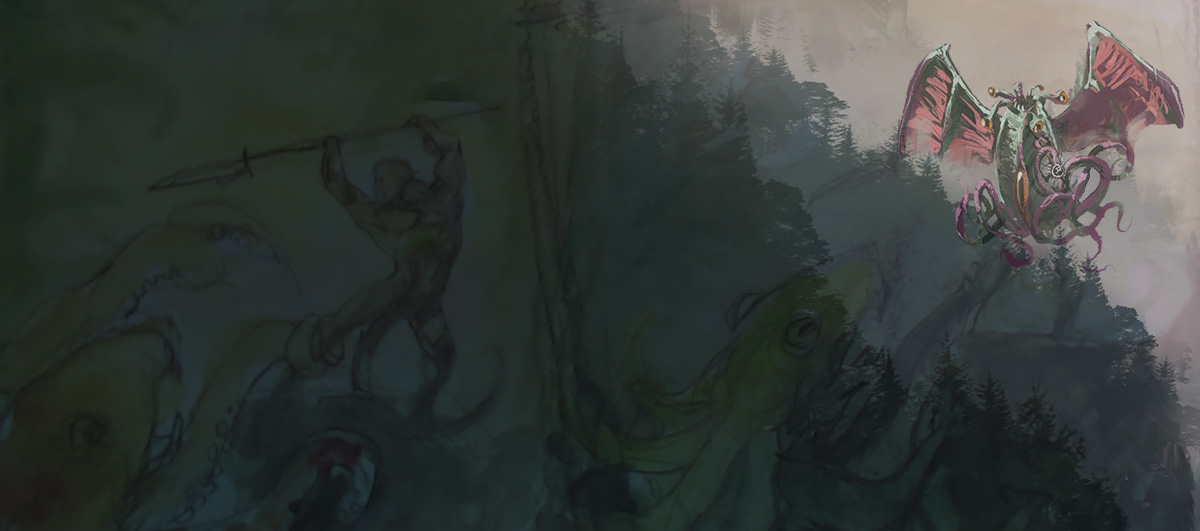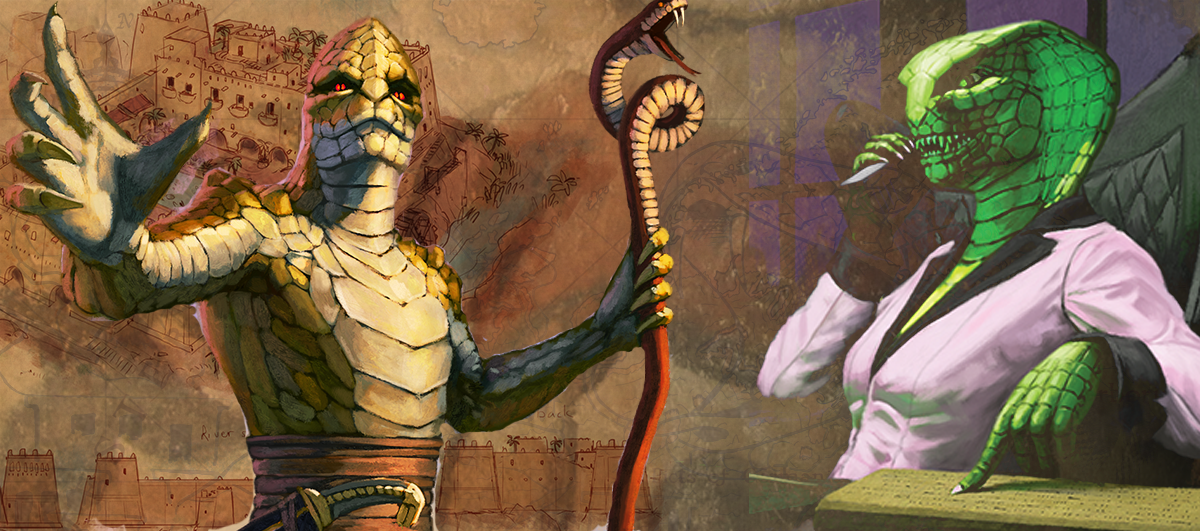Sword & Sorcery the link to Science Fiction
Science fiction and fantasy go hand-in-hand, to the point at which we often use the term SFF to refer to anything that has elements of either sci-fi or fantasy. In fact, before we go any further, we should probably take a quick look at what the two terms mean:
Science fiction is a type of exploratory fiction in which the emphasis is on exploring ideas that are made possible through the advancement of science. It often includes futuristic technologies or highly evolved versions of our own existing tech. Many people credit Mary Shelley with creating the science fiction genre by penning Frankenstein, and they have a point. At the very least, it’s a major influence.
Fantasy focusses more on magic, fantastic creatures, chosen ones and dark lords. If Frankenstein is the first sci-fi story, the first fantasy stories were the old legends that Greeks and Romans told around fireplaces. One of the easiest ways to tell whether a story is science fiction or fantasy is to look at what’s powering the world. If it’s magic, it’s fantasy, and if it’s technology, it’s science fiction. If it’s somewhere in between, it’s probably steampunk.
Steampunk is a type of hard science fiction which often taps into elements of Victorian England and the steam revolution. As opposed to traditional science fiction, steampunk is more grounded in older technology evolving down different paths, usually incorporating a certain level of historical fiction. It’s science fiction, but with a twist.
Perhaps the father of steampunk is Jules Verne, and indeed his forward-thinking science fiction novels are unlike anything else that was produced at the time. It’s possible that the reason that steampunk is so closely associated with Victorian society and steam power is that Verne was the pioneer and those were the times he was living in. It’s also fascinating to see that his work predated the arrival of more easily available global travel and submarines, amongst other things.
And then there’s sword and sorcery, which is a subset of fantasy which typically involves a rough-and-ready hero who’s skilled with a sword and who has some sort of personal journey to go on. In contrast to epic fantasy like Lord of the Rings, where the fate of the whole realm hangs in the balance, sword and sorcery heroes are often pursuing personal vengeance or some other vendetta.
And so at first, it might seem as though there isn’t much that sci-fi and sword and sorcery have in common. But bear with me! As you’ll come to see from the rest of this article, the two genres have a surprising number of similarities, and while they’ve evolved separately, they’ve followed a surprisingly similar path.
For example, steampunk and sword and sorcery are unlikely cousins of a sort. Both have evolved as offshoots of their primary genres, and both tend to be more character and world-driven then epic in scope with big questions about life and existence.
Epic fantasy tends to focus on the battle between good and evil. Steampunk is more likely to be a though experiment, a big “what if?” that shows us what could have been. A sword and sorcery novel will probably follow a buff guy with a sword who’s out for revenge.
Getting Gritty With It
One thing that much science fiction and sword and sorcery have in common is that they display a similar level of grittiness. They’re very much grounded in realism, even when it seems as though they’re taking place somewhere alien to our own world.
For example, science fiction places a heavy emphasis on our own scientific progress. Even the most futuristic spaceships need to adhere to what we know about gravity and physics, unless the author can think of a decent workaround. In fact, what makes science fiction great is its plausibility, and this comes from the attention to detail and the integration of known scientific concepts.
Sword and sorcery doesn’t really have to worry about physics too much, but because of its inherent grittiness, there are other factors to consider. For example, fictional monsters need to be grounded in reality if they’re to seem believable, and if you’re describing a centaur as it runs and you haven’t done your research, you can bet that a keen horseman somewhere will spot it.
The same holds true during combat. The author needs to get every single thrust and parry just right, but they also need to have a working knowledge of tactics and first aid. If a hero’s wound becomes infected, we need to see the consequences as they struggle to deal with it. It might not always be pleasant to write or to read about, but it’s real.
Space Operas and Fantasy
Let’s take a moment here to talk about space operas, the subcategory of science fiction that deals with more complex political themes and the relationships between characters just as much as it deals with science fiction itself.
Perhaps the most famous example of the space opera is Frank Herbert’s Dune, a novel which is still growing in influence all these years later. I actually have a tattoo that reads “Fear is the mind-killer”, a quote from the Fear litany. Dune has been a major inspiration on everything from Star Wars to George R. R. Martin’s A Game of Thrones, and that alone is a great indication of the genre’s crossover appeal.
Sword and sorcery rarely has the same high politics, but it does still have the same focus on interpersonal relationships. In fact, our heroes can rarely go it alone, and they’ll typically have to rely on an ever-evolving cast of supporting characters, as well as their wits and diplomacy skills. The best sword and sorcery heroes often rely on their swords as a backup plan instead of immediately reaching for a blade as the solution to every situation.
If space operas are the science fiction equivalent of epic fantasy, steampunk is the science fiction equivalent or sword and sorcery. And there’s a good reason why the two of them evolved hand-in-hand: pulp.
Pulp
Pulp magazines were a phenomenon of the early 20th century that were the time period’s equivalent to blogs and fanzines. Typically printed in cheap paper (hence the name), pulp books and magazines were designed to be as widely available as possible, cutting down on production costs to pass those savings on to the reader.
Arguably the largest and most iconic pulp brand was the long-running magazine Weird Tales, which was the first to publish H. P. Lovecraft’s Cthulhu stories. Lovecraft himself was occasionally known to blur the boundaries between fantasy and science fiction, although he can hardly be credited as a traditional sword and sorcery writer. The first issue of Weird Tales was published in early 1922 and the magazine has been published on and off ever since, depending upon various licensing agreements.
Our very own Robert E. Howard was also a regular contributor, and his Conan and Kull stories have been true icons within the genre. It’s almost impossible to overstate the importance that Weird Tales has had within the development of both sword and sorcery and science fiction. It’s quite a remarkable achievement, considering that it’s believed that the magazine never exceeded a circulation of 50,000 copies.
For the purposes of this article, though, we’re interested in the way that Weird Tales and other publications of its ilk were able to act as a melting pot of influences. Where else would fantasy writers be exposed to important scientific concepts, and where else would science fiction be introduced to legends and mythology?
The popularity of pulp, which was more of an unconscious movement driven by necessity than anything else, is arguably the single biggest thing that cemented science fiction and fantasy together in the public consciousness. And if you think of literary genres as organisms which constantly evolve over time, the pulp publications were their habitats.
You could argue that without the convergence of sword and sorcery and science fiction, we wouldn’t have Star Wars. After all, Jedi knights are basically sword-wielding magicians with a little religion thrown in, and the alien life forms aren’t too dissimilar to fantasy creatures. True, most people would categorise it as a space opera as opposed to a sword and sorcery movie, but as we’ve seen, there’s often a lot of crossover.
Sci-Fi and Sword and Sorcery in the 21st Century
As for what’s next for both science fiction and sword and sorcery, it’s really anyone’s game. Arguably the biggest sci-fi success of the last few years has been The Martian, a novel by Andy Weir that was also turned into a successful Hollywood movie. As for sword and sorcery, it’s mostly gone underground, although elements of it have been repurposed and popularised by the more modern genre of grimdark fantasy.
This type of fantasy is characterised by darker, more brutally realistic writing, elements of which are most obvious in works like George R. R. Martin’s A Song of Ice and Fire series and the TV show that was based upon it. The interesting thing about grimdark fantasy is that despite having many of the elements of sword and sorcery, it also borrows from epic fantasy and other genres. And that includes science fiction, which is a clear influence on many of the “hard” magic systems that grimdark fantasy taps into.
So both sword and sorcery and science fiction have bright futures ahead of them, although not necessarily in the way that we might think. It’s fascinating to look at where sword and sorcery came from and where it is today, but that gives us no guarantees of what we can expect tomorrow.
Conclusion
As you’ve seen from this article, science fiction and sword and sorcery have a lot in common, but they also have their differences. That’s a good thing, because it means that while both genres are evolving independently, they’re also evolving in parallel. One genre can learn from another, and it’s us – the readers – who benefit.
So if you’re a die-hard science fiction reader who’s always steered clear of sword and sorcery, or even if you’re a sword and sorcery fan who’s never tried sci-fi, perhaps it’s time to give it a shot. As you can see, there’s a lot of crossover between the two, but there are also a bunch of new and exciting stories because what works for one genre won’t necessarily work for the other.
Are you a sword and sorcery and/or science fiction fan? What do you think about the crossover between the two genres? Be sure to leave us a comment to let us know what you think!
Article Written by Dane Cobain for Epiphany Entertainment
Copyright ©Epiphany Entertainment 2020


